The Gift of South Dakota
Subscriptions to South Dakota Magazine make great gifts!
Subscribe today — 1 year (6 issues) is just $29!
Writer's Block in South Dakota
Nov 3, 2015
Editor's Note — Pierre native Joseph Bottum went to Washington and built a career by writing about politics and religion. When he and his family came home to settle in Hot Springs, he knew there'd be challenges to continuing his career path in South Dakota. But he wasn't thinking that the new roadblocks would have antlers and four legs. We reprint this essay from The Weekly Standard.
She seemed more curious than frightened, the doe-eyed ... doe, I suppose, and we studied each other for a long moment or two. She, calm in a farmer’s field, looking over the fence line. And me, unmoving in the wreck, staring back at her through the shattered glass.
Then some click of the cooling engine, or maybe a groan of bent metal and drip of radiator fluid, convinced her that I wasn’t worth her time. The deer trotted a few yards further along the fence, leapt it with a neatfoot bounce, and disappeared off into the woods — leaving me to climb my way out of my broken car and scrabble back up to the highway, hoping to flag down some help.
Odd, really, to see her so clearly, so sharply, when I never actually saw the other deer, the one I hit at 80 miles an hour on a South Dakota highway—the one that left me with a couple of cracked ribs, a chipped collarbone, a gouged ankle, and a sprained wrist. Oh, and a spectacular set of bruises placed around my body with the precision of a drunken xylophonist.
Plus, of course, a totaled car. There are, it is said, more deer in North America today than there were when the Pilgrims landed. Certainly there are more out on the western prairies. The Homestead Acts often required the planting of acres of trees to prove a farmer’s claim, and those windbreaks and narrow groves have added up to a massive national nature preserve: a refuge for white-tails and mule deer. Of course, they then wander out onto the highway, where there’s not much refuge for either deer or the drivers who hit them.
Nearly everyone I’ve spoken to, in the days since my accident, has a story of animals on the road. The problem, in my case, is that the first notice I had was the darkening of my field of vision as the windshield bowed in at me. Picturing the accident now, I realize that the deer probably didn’t see me, either. Driving into the dark, with the twilight behind me, my car would have been invisible, and the deer must have jumped up out of the long fall grass of the road’s shoulder at exactly the right moment to slide across the hood of the car and land, back first, on the windshield.
But I see that only in retrospect. At the time, the craze of cracks in the safety glass left me blind as I flinched and swerved, only to slide sideways down the steep embankment and bang along a 50-yard line of—what else?—trees planted as a farmer’s windbreak maybe a hundred years before. Eventually, the fender was bent in enough that the front wheel could catch on one of the trees, swinging the car 180 degrees so that the driver’s side could get its own share of smashing.
I’m not sure where, along the way, the deer fell off. A little blood on the fender, as though I’d clipped its legs, and some hair on the windshield shards were all that was left—even on the trail of plowed down grass I’d left behind. However badly injured, the deer somehow managed to walk away from the accident.
Which is better than I did. For me, it was more of a crawl out of the car and up the embankment to wait for help. After I declined an ambulance, a paramedic told me I’d need X-rays and taping up, and, sore as I was, I’d be even sorer the next day, once everything tightened up. So I signed the highway patrolman’s accident report and had the tow-truck driver drop me off at a Sioux Falls car-rental agency— deciding that, since I still faced a six-hour drive back home to the Black Hills, I might as well do it immediately rather than wait for the painful stiffness of the next day.
That may have been a mistake. The Midwestern demand for self-sufficiency, an often self-defeating virtue drilled into my boyhood, was strong enough to get me up and moving. Strong enough, for that matter, to keep me going about as far as Rapid City. But, man, the hour in the car beyond that, driving home into the Hills, was a trial.
Still, I figured that if the deer I hit could walk away from the accident — if the other deer, the one I watched from my wreck, could stay calm even after I’d smashed through her woods — I could probably make it home, however painful the final miles. And though I saw a few deer in the woods along the way, they must have decided enough was enough. None of them jumped out into the road, and I made it at last home to painkillers and bed.


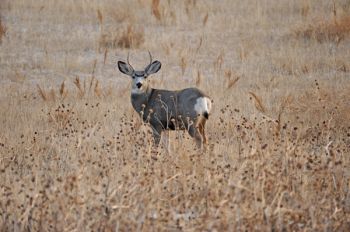
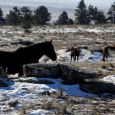

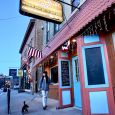
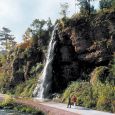
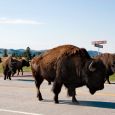
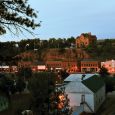


Comments